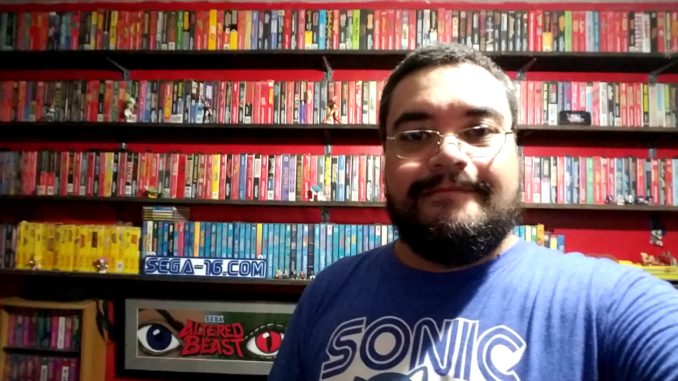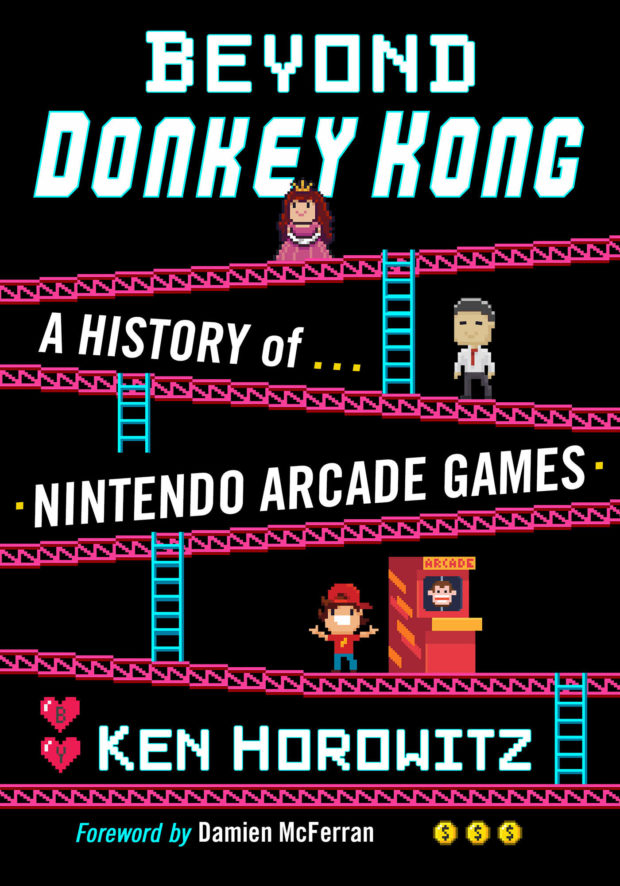
Review Fix chats with “Beyond Donkey Kong†author Ken Horowitz, who discusses the book, its creation process, goals and expectations as well as his other video game journalism work.

About “Beyond Donkey Kongâ€:
Before the enormously successful NES console changed the video game landscape in the 1980s, Nintendo became famous for producing legendary arcade machines like Donkey Kong and Mario Bros. Drawing on original interviews, news reports and other documents, this book traces Nintendo’s rise from a small business that made playing cards to the top name in the arcade industry. Twenty-eight game titles are examined in-depth, along with the people and events that defined the company for more than four decades.
About Ken Horowitz:
Ken Horowitz is a professor of English and has written about Sega and video games for over a decade for his website, Sega-16, as well as for numerous other websites and magazines. He lives in Puerto Rico.
Review Fix: What inspired this book?
Ken Horowitz: I got the inspiration while working on my second book, The Sega Arcade Revolution. While researching, I came across a lot of old articles about Nintendo’s arcade days – trade show highlights, interviews, and news articles. I thought it would be great to maybe do an article on the subject, but I soon had enough sources that it bloomed into a full book. I was able to speak to several individuals from the era and have access to new interviews with several others (thanks Gaming Alexandria!), and once I made a tentative outline to determine viability, I saw that there was more than enough information.
I think the topic definitely deserved coverage. Nintendo’s arcade period is hardly discussed in detail, and a lot of great people worked hard to make some classic games. The Nintendo we love today has its roots in its coin-op period, and I think people need to see the whole story about the company. There’s a lot more to tell; I didn’t cover everything, to be sure, but I hope the book can serve as foundational literature for future study.
Review Fix: How is it different from your other books?
Horowitz: The format is the same, but each subject has its own charm and direction. Nintendo’s arcade history is quite different from Sega’s, and it morphs into consoles pretty early on. The entire company shifts focus from coin-ops to home consoles, while Sega’s arcade business remained (and still is) separate from its consumer division. Nintendo’s strong Japanese roots are also central to its story, while Sega has a long history in the U.S. It was fascinating to tell both stories and see how differently they evolved.
Review Fix: Any fun moments?
Horowitz: I really enjoyed writing about the lesser-known games (I always do!). Speaking to the designer of the Super Mario Bros. pinball game was quite interesting, and to be able to talk with a legend like Eugene Jarvis was mind-blowing. The guy is a hero of mine! Being able to write about the games you grew up with and speak to many of those responsible is still as satisfying as ever. Nintendo’s arcade games were a major part of my childhood, so this whole book was really special to me.
Review Fix: Any major lessons learned?
Horowitz: The biggest lesson I learned was that you have to always have a plan B when it comes to information. I learned a while ago that you can’t always depend on people to talk to you because sometimes they can’t and sometimes… they just don’t want to. There were several people who simply weren’t interested in participating, even after being asked by former colleagues at Nintendo. Thankfully, I had more than enough articles and previous interviews they had done to tell the story. That’s why I always make an outline at the start. If there aren’t enough topics to fill one out, and if there aren’t enough sources to make the story worth telling, then I don’t do it.
Review Fix: What are your goals for it?
Horowitz: I would like people to use it as foundational literature – a source on which they can build to complete the story of Nintendo’s history. I’d also like modern Nintendo fans to give it a read to see the company’s early days and how the company became the juggernaut it is now. Younger fans might not even know that Nintendo made arcade games beyond Donkey Kong and Mario (hence the title), and I’d like them to use the book to learn more about that critical period.
Review Fix: How would you like it to be remembered?
Horowitz: I’d guess I’d like people to think of me as a game historian and not just the “Sega guy.” Only one of my next two projects are Sega-related, though I continue to write for Sega-16. There are so many great gaming stories out there, and they need to be told! I plan to document as many as I can, as long as there is enough information to do so accurately and comprehensively. The coin-op industry is one that’s still largely unknown, and there are so many more stories that need to be shared!
Review Fix: Where does it stand among your other books?
Horowitz: I think it’s the best-written of all three, in terms of pacing and structure. Of course, you’re supposed to get better as you go, right? I do wish I had more people to speak to, as I had with Playing at the Next Level, but the largely Japanese origin of Nintendo and its famously tight-lipped culture made that difficult. It does illustrate a lot more about the Japanese game industry than the others, including the laws affecting gaming and trade shows. Most importantly, I think it does shed a lot of light on a previously dark part of Nintendo’s legacy, one that people acknowledged but didn’t really know.
Review Fix: What’s next?
Horowitz: I have two more projects in preliminary stages. I’m almost ready to begin drafting the manuscript for one, and the other is in negotiations with a major publisher for licensing. How things progress with the latter will determine how I proceed. I’ve already conducted several interviews for it, so it will happen. I don’t know what will be next after those two projects are done. I have a few ideas but nothing concrete. I may update and expand my Sega-16 articles and put them in book form, as that would fill several volumes. I really would like to see that work published as a book series someday. We’ll see what happens!
Review Fix: Anything else you’d like to add?
Horowitz: I’d like to thank anyone who has bought any of my books. I greatly appreciate the support and am humbled every time someone tells me they enjoyed my work. I would ask that readers leave Amazon reviews for the books they enjoyed, as they really help elevate their profiles. I am also grateful to those who enjoy Sega-16 and appreciate their support over the past 16 years. The site’s not going anywhere, and I hope to keep bringing reviews, features, and interviews for many years to come.


Leave a Reply